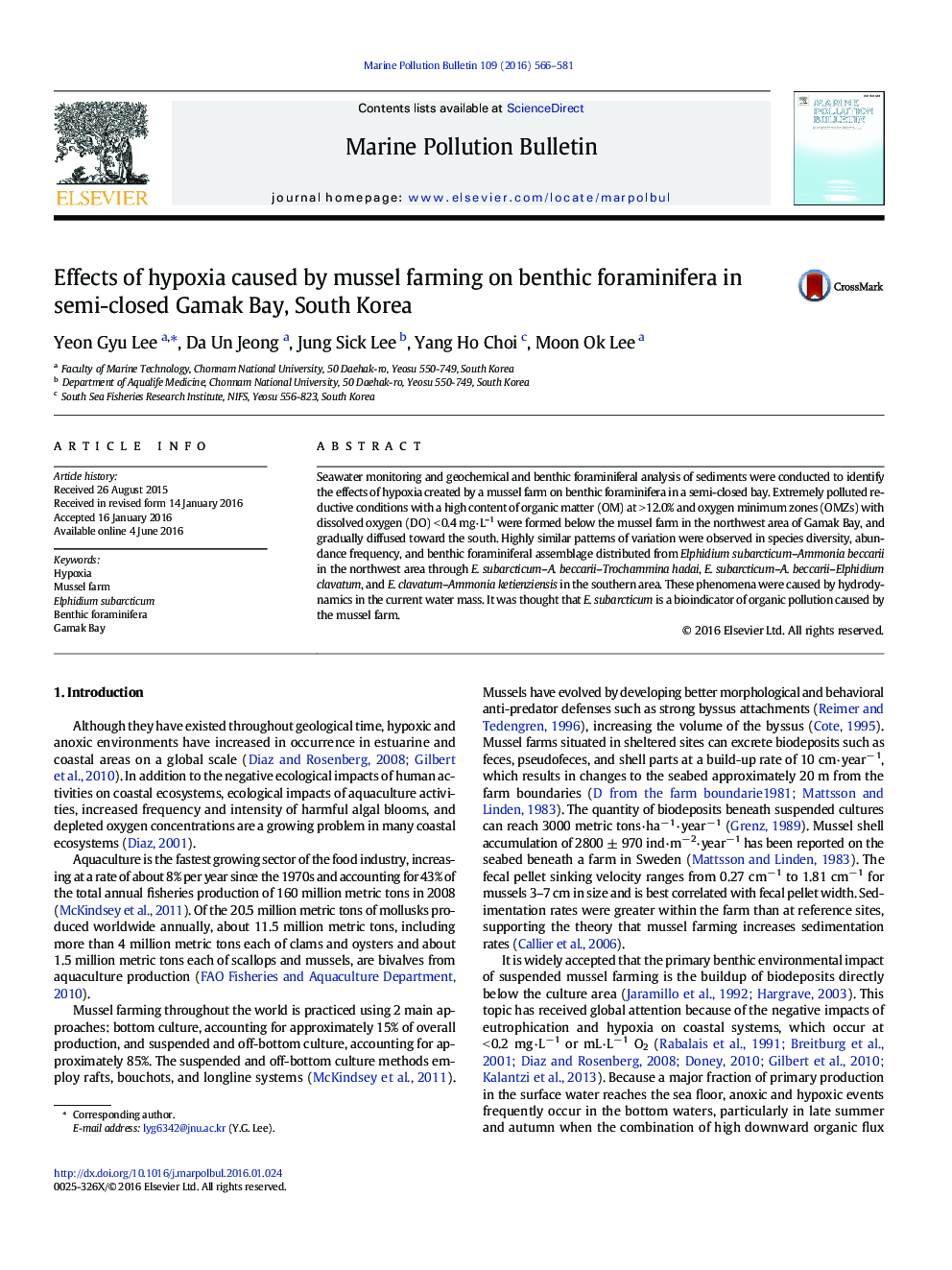| Article ID | Journal | Published Year | Pages | File Type |
|---|---|---|---|---|
| 4476436 | Marine Pollution Bulletin | 2016 | 16 Pages |
•Eutrophication and hypoxia in summer occurred in Gamak Bay with mussel culturing.•We tried to identify the effects of organic pollutants on benthic foraminiferal assemblages.•Extremely reductive conditions were formed below farm, and diffused toward the south.•Highly similar patterns of variation were observed in benthic foraminiferal assemblage.•These phenomena were caused by hydrodynamics in the current water mass.
Seawater monitoring and geochemical and benthic foraminiferal analysis of sediments were conducted to identify the effects of hypoxia created by a mussel farm on benthic foraminifera in a semi-closed bay. Extremely polluted reductive conditions with a high content of organic matter (OM) at > 12.0% and oxygen minimum zones (OMZs) with dissolved oxygen (DO) < 0.4 mg ∙ L–1 were formed below the mussel farm in the northwest area of Gamak Bay, and gradually diffused toward the south. Highly similar patterns of variation were observed in species diversity, abundance frequency, and benthic foraminiferal assemblage distributed from Elphidium subarcticum–Ammonia beccarii in the northwest area through E. subarcticum–A. beccarii–Trochammina hadai, E. subarcticum–A. beccarii–Elphidiumclavatum, and E. clavatum–Ammonia ketienziensis in the southern area. These phenomena were caused by hydrodynamics in the current water mass. It was thought that E. subarcticum is a bioindicator of organic pollution caused by the mussel farm.
